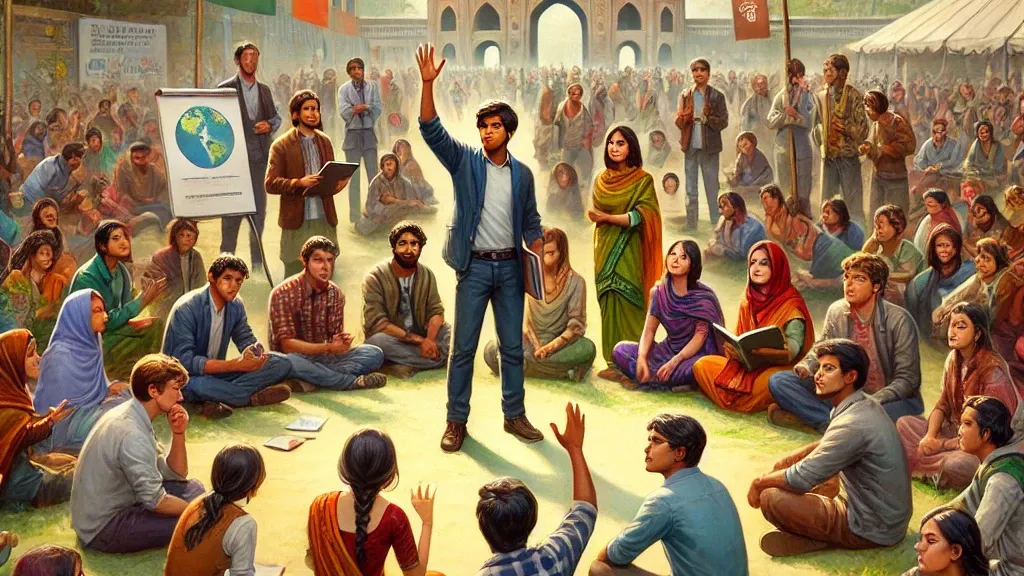Blogs
Tips for Engaging Youth in Civic Action (Without Talking Down or Tuning Out)

Young people aren’t apathetic, and we should have no doubts about it. They’re overloaded. They’re targeted by disinformation, exhausted by broken systems, and rightfully skeptical of performative activism. But what happens when they believe in a cause? They show up.
Loudly.
Creatively.
Consistently.
If you want to engage them, you need more than good intentions—you need strategy. These tips for engaging youth in civic action are built for today’s reality, not yesterday’s playbook.
At Call to Activism, we’ve mobilized millions of Gen Z and millennial voices—not by speaking at them, but by building platforms with them. From short-form content to rapid-response storytelling, we’ve seen firsthand how young people become the engine of real change when the message, method, and mission are aligned.
So if you’re trying to get more young people involved in civic life, this isn’t about getting them to “care.” It’s about proving that their voice actually changes something.
Tip 1: Speak Their Language
Today’s youth grew up online. They’ve seen it all—political memes, activist TikToks, branded climate campaigns, and “relatable” attempts from institutions trying to be cool. What haven’t they seen enough of? Authenticity. Purpose. And people who talk to them, not at them.
Here’s what works:
- Drop jargon. Use conversational tone and modern references.
- Meet them where they scroll: TikTok, IG Reels, Discord, X.
- Acknowledge what they already know—and what they don’t trust.
One of the most important tips for engaging youth in civic action is to stop translating your message after it’s created. Instead, build it with young voices from the beginning. Collaborate on the language, visuals, and tone. That’s how you turn passive interest into active engagement.
Tip 2: Make It Feel Like a Movement
Gen Z doesn’t need more volunteer hours—they want meaning. If civic participation feels like homework, they’ll bounce. But if it feels like being part of something bigger—they’ll dive in.
Create opportunities that are:
- Actionable: “Here’s how you can shift this narrative today.”
- Time-sensitive: “This story is trending—let’s respond now.”
- Collaborative: “Join the digital rollout, create your own post, be part of the impact.”
When we launched a campaign against digital voter suppression, we didn’t say “Please register.” We said, “Let’s prove they can’t silence us.” Then we gave them tools to post, clap back, and show receipts. Engagement exploded—because it felt urgent, personal, and communal.
This generation isn’t lazy. They’re selective. Show them a movement worth joining.
Tip 3: Turn Micro-Actions Into Macro Impact
Not every young person is ready to canvas door-to-door. But they will repost a 30-second clip that challenges disinformation. They’ll amplify a quote, sign a petition, submit an emoji-laced comment on a public hearing. These small steps build momentum—if you track and elevate them.
How?
- Celebrate micro-actions publicly: “This post got 2K shares in 1 hour. That’s impact.”
- Build ladders: After someone reposts, send them an email invite to join the next action step.
- Use gamification: Track collective impact and visualize it.
This is a central part of our work at Call to Activism. Every viral video isn’t just awareness—it’s a gateway. The key to most tips for engaging youth in civic action is recognizing that small wins open the door to deeper investment.
Tip 4: Make Storytelling Central
Young people connect through stories, not stats. If you want to move them, show them why this matters through someone they can relate to.
Let them see:
- The college student navigating housing insecurity because of bad zoning policy
- The high schooler whose library lost funding after a school board decision
- The Gen Z organizer who found purpose in leading walkouts or building toolkits
Even better? Let the youth tell the story themselves. Host short-form takeovers. Feature their voices in clips, reels, and panels. When you hand them the mic, they don’t just engage—they lead.
Joe Gallina’s strategy revolves around Viral Truths—quotes that don’t just inform, but mobilize. The same principle applies here. Your message becomes real when young people see themselves in it.
Tip 5: Offer Power, Not Just Participation
If you’re asking young people to show up, give them a seat at the table—or they’ll build their own table elsewhere. Meaningful civic engagement includes:
- Paid fellowships and internships
- Co-creation of content and campaigns
- Youth advisory boards with real influence
- Public credit and visibility for contributions
This generation is smart. They spot tokenism fast. If your organization or campaign is serious about engaging youth, give them agency. Let them shape the message, lead the rollout, and get credit for the wins.
True engagement happens when youth know they’re not just being used for “reach”—they’re being invited into power.
Conclusion
Look, inspiration is easy. Anyone can make a cool video or post a fire quote. But what turns attention into action is structure. That’s what these tips for engaging youth in civic action are really about: designing entry points that meet young people where they are, and then walking with them toward deeper action.
So don’t just ask Gen Z to care. Show them that when they act, things change. Then get out of their way—because they’re not just the future of civic life. They’re the ones rebuilding it right now.
